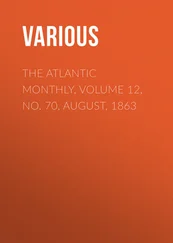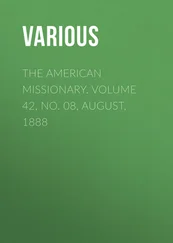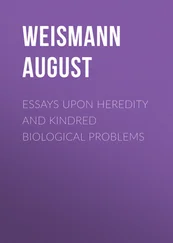August Weismann - Studies in the Theory of Descent, Volume I
Здесь есть возможность читать онлайн «August Weismann - Studies in the Theory of Descent, Volume I» — ознакомительный отрывок электронной книги совершенно бесплатно, а после прочтения отрывка купить полную версию. В некоторых случаях можно слушать аудио, скачать через торрент в формате fb2 и присутствует краткое содержание. Жанр: foreign_antique, foreign_prose, на английском языке. Описание произведения, (предисловие) а так же отзывы посетителей доступны на портале библиотеки ЛибКат.
- Название:Studies in the Theory of Descent, Volume I
- Автор:
- Жанр:
- Год:неизвестен
- ISBN:нет данных
- Рейтинг книги:4 / 5. Голосов: 1
-
Избранное:Добавить в избранное
- Отзывы:
-
Ваша оценка:
- 80
- 1
- 2
- 3
- 4
- 5
Studies in the Theory of Descent, Volume I: краткое содержание, описание и аннотация
Предлагаем к чтению аннотацию, описание, краткое содержание или предисловие (зависит от того, что написал сам автор книги «Studies in the Theory of Descent, Volume I»). Если вы не нашли необходимую информацию о книге — напишите в комментариях, мы постараемся отыскать её.
Studies in the Theory of Descent, Volume I — читать онлайн ознакомительный отрывок
Ниже представлен текст книги, разбитый по страницам. Система сохранения места последней прочитанной страницы, позволяет с удобством читать онлайн бесплатно книгу «Studies in the Theory of Descent, Volume I», без необходимости каждый раз заново искать на чём Вы остановились. Поставьте закладку, и сможете в любой момент перейти на страницу, на которой закончили чтение.
Интервал:
Закладка:
7
[In 1860 Andrew Murray directed attention to the disguising colours of species which, like the Alpine hare, stoat, and ptarmigan, undergo seasonal variation of colour. See a paper “On the Disguises of Nature, being an inquiry into the laws which regulate external form and colour in plants and animals.” Edinb. New Phil. Journ., Jan. 1860. In 1873 I attempted to show that these and other cases of “variable protective colouring” could be fairly attributed to natural selection. See Proc. Zoo. Soc., Feb. 4th, 1873, pp. 153–162. R.M.]
8
[A phenomenon somewhat analogous to seasonal change of protecting colour does occur in some Lepidoptera, only the change, instead of occurring in the same individual, is displayed by the successive individuals of the same brood. See Dr. Wallace on Bombyx Cynthia , Trans. Ent. Soc. Vol. v. p. 485. R.M.]
9
“Über den Einfluss der Isolirung auf die Artbildung.” Leipzig, 1872, pp. 55–62.
10
[Mr. A. R. Wallace maintains that the obscurely coloured females of those butterflies which possess brightly coloured males have been rendered inconspicuous by natural selection, owing to the greater need of protection by the former sex. See “Contributions to the Theory of Natural Selection,” London, 1870, pp. 112–114. It is now generally admitted that the underside of butterflies has undergone protectional adaptation; and many cases of local variation in the colour of the underside of the wings, in accordance with the nature of the soil, &c., are known. See, for instance, Mr. D. G. Rutherford on the colour-varieties of Aterica Meleagris (Proc. Ent. Soc. 1878, p. xlii.), and Mr. J. Jenner Weir on a similar phenomenon in Hipparchia Semele ( loc. cit. p. xlix.) R.M.]
11
[The fact that moths which, like the Geometræ, rest by day with the wings spread out, are protectively marked on the upper side, fully corroborates this statement. R.M.]
12
“Über die Einwirkung verschiedener, während der Entwicklungsperioden angewendeter Wärmegrade auf die Färbung und Zeichnung der Schmetterlinge.” A communication to the Society of Natural Science of Steiermark, 1864.
13
See Exp. 9, Appendix I.
14
See Exp. 11, Appendix I.
15
See Exps. 4, 9, and 11, Appendix I.
16
It seems to me very necessary to have a word expressing whether a species produces one, two, or more generations in the year, and I have therefore coined the expression mono- , di- , and polygoneutic from γονεύω, I produce.
17
[Eng. ed. In the German edition, which appeared in 1874, I was not able to support this hypothesis by geographical data, and could then only ask the question “whether in the most northern portion of its area of distribution, appears in two or only in one generation?” This question is now answered by the Swedish Expedition to the Yenisei in 1876. Herr Philipp Trybom, one of the members of this expedition, observed A. Levana at the end of June and beginning of July, in the middle of Yenisei, in 60°-63° N. (Dagfjärilar från Yenisei in Översigt ap k. Vertensk. Akad. Förhandlingon, 1877, No. 6.) Trybom found Levana at Yenisk on June 23rd, at Worogova (61° 5´) on July 3rd, at Asinova (61° 25´) on July 4th, at Insarowa (62° 5´) on July 7th, and at Alinskaja (63° 25´) on July 9th. The butterflies were especially abundant at the beginning of June, and were all of the typical Levana form. Trybom expressly states, “we did not find a single specimen which differed perceptibly from Weismann’s Figs. 1 and 2(‘Saison-Dimorphismus’ Taf. I.).”
The Swedish expedition soon left the Yenisei, and consequently was not able to decide by observations whether a second generation possessing the Prorsa form appeared later in the summer. Nevertheless, it may be stated with great probability that this is not the case. The districts in which Levana occurs on the Yenisei have about the same isotherm as Archangel or Haparanda, and therefore the same summer temperature. Dr. Staudinger, whose views I solicited, writes to me: – “In Finnmark (about 67° N.) I observed no species with two generations; even Polyommatus Phlæas , which occurs there, and which in Germany has always two, and in the south, perhaps, three generations, in Finnmark has only one generation. A second generation would be impossible, and this would also be the case with Levana in the middle of Yenisei. I certainly have Levana and Prorsa from the middle of Amur, but Levana flies there at the end of May, and the summers are very warm.” The middle of Amur lies, moreover, in 50° N. lat., and therefore 10°-13° south of the districts of the Yenisei mentioned.
It must thus be certainly admitted that on the Yenisei A. Levana occurs only in the Levana form, and that consequently this species is at the present time, in the northernmost portion of its area of distribution, in the same condition as that in which I conceive it to have been in mid Europe during the glacial period. It would be of the greatest interest to make experiments in breeding with this single-brooded Levana from the Yenisei, i.e., to attempt to change its offspring into the Prorsa form by the action of a high temperature. If this could not be accomplished it would furnish a confirmation of my hypothesis than which nothing more rigorous could be desired.]
18
See Exp. 10, Appendix I.
19
When Dorfmeister remarks that hibernating pupæ which, at an early stage “were taken for development into a room, or not exposed to any cold, gave dwarfed, weakly and crippled,” or otherwise damaged butterflies, this is entirely attributable to the fact that this able entomologist had neglected to supply the necessary moisture to the warm air. By keeping pupæ over water I have always obtained very fine butterflies.
20
[For other remarkable cases of sexual dimorphism (not antigeny in the sense used by Mr. S. H. Scudder, Proc. Amer. Acad., vol. xii. 1877, pp. 150–158) see Wallace “On the Phenomena of Variation and Geographical Distribution, as illustrated by the Papilionidæ of the Malayan Region,” Trans. Linn. Soc., vol. xxv. 1865, pp. 5–10. R.M.]
21
[Eng. ed. Dimorphism of this kind has since been made known: the North American Limenitis Artemis and L. Proserpina are not two species, as was formerly believed, but only one. Edwards bred both forms from eggs of Proserpina . Both are single-brooded, and both have males and females. The two forms fly together, but L. Artemis is much more widely distributed, and more abundant than L. Proserpina . See “Butterflies of North America,” vol. ii.]
22
[Eng. ed. Edwards has since proved experimentally that by the application of ice a large proportion of the pupæ do indeed give rise to the var. Telamonides . He bred from eggs of Telamonides 122 pupæ, which, under natural conditions, would nearly all have given the var. Marcellus . After two months’ exposure to the low temperature there emerged from August 24th to October 16th, fifty butterflies, viz. twenty-two Telamonides , one intermediate form between Telamonides and Walshii , eight intermediate forms between Telamonides and Marcellus more nearly related to the former, six intermediate forms between Telamonides and Marcellus , but more closely resembling the latter, and thirteen Marcellus . Through various mishaps the action of the ice was not complete and equal. See the “Canadian Entomologist,” 1875, p. 228. In the newly discovered case of Phyciodes Tharos also, Edwards has succeeded in causing the brood from the winter form to revert, by the application of ice to this same form. See Appendix II Конец ознакомительного фрагмента. Текст предоставлен ООО «ЛитРес». Прочитайте эту книгу целиком, купив полную легальную версию на ЛитРес. Безопасно оплатить книгу можно банковской картой Visa, MasterCard, Maestro, со счета мобильного телефона, с платежного терминала, в салоне МТС или Связной, через PayPal, WebMoney, Яндекс.Деньги, QIWI Кошелек, бонусными картами или другим удобным Вам способом.
. for a résumé of Edwards’ experiments upon both Papilio Ajax and Phyciodes Tharos . R.M.]
Интервал:
Закладка:
Похожие книги на «Studies in the Theory of Descent, Volume I»
Представляем Вашему вниманию похожие книги на «Studies in the Theory of Descent, Volume I» списком для выбора. Мы отобрали схожую по названию и смыслу литературу в надежде предоставить читателям больше вариантов отыскать новые, интересные, ещё непрочитанные произведения.
Обсуждение, отзывы о книге «Studies in the Theory of Descent, Volume I» и просто собственные мнения читателей. Оставьте ваши комментарии, напишите, что Вы думаете о произведении, его смысле или главных героях. Укажите что конкретно понравилось, а что нет, и почему Вы так считаете.












